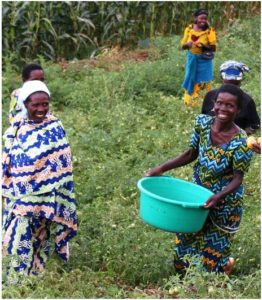In 1996, members of La Via Campesina, an organization that defends the values and basic interests of agricultural workers, coined the term “food sovereignty” to bring attention to the growing distance between farmers and the food they grow. Small farmers often suffer from unfair agricultural policies and the idea behind food sovereignty is to provide them with more opportunities to participate in the decision making process.

FANRPAN has helped women farmers access markets through its WARM project. (Photo credit: Julie Carney)
Fast forward almost fifteen years later, and small farmers still have limited bargaining power, even though they represent 80 percent of farmers in the developing world.
One organization that helps connect farmers with policy makers is the Food, Agriculture, and Natural Resources Policy Analysis Network (FANRPAN) which currently operates in thirteen African countries. FANRPAN enables discussions between farmers, researchers and policy makers throughout Africa and has also helped women farmers access markets through its Women Accessing Realigned Markets (WARM) project
In some cases, farmers themselves get organized to regain sovereignty over the food they grow. In Senegal, farmers groups from around the country formed an association in the 1970s to oppose state owned cooperatives. The group, the Senegalese Federation of NGOs (FONGs) now represents thousands of farmers, fishermen and pastoralists. FONG advocates for improved access and better rights to land, better market infrastructure, and other policies that directly help small farmers.
Increasing food sovereignty among farmers is not limited to policy making, but it also includes ensuring that rural farmers have all the tools they require at an affordable price.
Founded in 2006, One Acre Fund (OAF) works with farmers in Kenya and Rwanda to address their needs, including market access and agricultural inputs. Farmers receive loans of seed and fertilizer from OAF, which sets up drop off centers within two kilometers of where farmers live. OAF field officers monitor farmers’ fields providing information on sustainable farming practices. The final loan repayment is due several weeks after the harvest and the organization currently has a repayment rate of 98 percent. Most farmers working with OAF are able to increase their yields from five to nearly 15 bags of maize from the same area of land.








